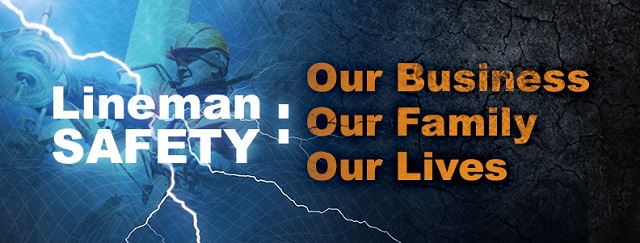Light, Power, and Education: A History of Protecting Linemen
It’s funny the way life twists and turns around us in ways that connect, enlighten and inspire us all. There’s a deep connection between the Public Service Company of Oklahoma, Tulsa Central High School and the Bevins family.

Lighting Tulsa: Public Service Company of Oklahoma
The history of the PSO is interwoven with the history of Bevins Co., and our family. The Public Service Company of Oklahoma itself started in 1889 when Vinita Electric Light Ice & Power Company chartered to provide electric service to those in what was then Indian Territory.
Then in 1916, PSO’s founder and first president, Frederick “Fred” Insull – the nephew of Samuel Insull who worked with Thomas Edison – moved PSO’s headquarters to Tulsa.
Light of Education: Tulsa Central High
A year later Tulsa built its newly established high school, Tulsa Central, at the corner of Sixth and Cincinnati where it would remain until 1976. By the mid-seventies, Tulsa Public Schools had decided to accommodate their growing student body with a new building, and lease the old school building.
As it happened, PSO had recently decided to make a move themselves, and the old Central High School building was leased – and finally purchased – by Public Service Company of Oklahoma
Marvin Bevins: Lineman Safety Pioneer
Like the PSO and Tulsa Central High School, the Bevins family came to Tulsa early in the 20th century. Originally from Blackwell, Oklahoma, Marvin Bevins attended Oklahoma A&M (now Oklahoma State University) at the young age of 16. He earned the coveted Eta Kappa Nu Award from the Institute of Electrical and Electronic Engineers and graduated with a Bachelor of Science in Electrical Engineering. Shortly afterward, in 1933, Marvin began working for PSO with a crew of lineman working to construct power lines across the state.
Then, in 1943, a lineman on his crew suffered a fatal injury. Deeply affected by this loss, Marvin developed the Original Phasing Set to provide a way to keep lineman safe from the inherently dangerous job of working with high voltages of electrical current. From then on, his life’s focus shifted to keeping linemen safe.
Richard Bevins: Making Lineman Safety a Reality
Richard was born into the Bevins family a few years before Marvin’s pioneering into the world of lineman safety, and he grew up with the mission to keep these workers from injury and death. While attending Tulsa Central prior to it’s sale to PSO, Richard Bevins worked for his father’s utility construction crews in his free time, graduating in 1953 and – soon after – marrying his wife Terry.
He worked for his father through college as well, helping to install the power line poles on all the highways of Oklahoma, New Mexico, Colorado and Arizona during the construction of the new federal highways.
Richard Bevins spent about 18 months in the US Navy before graduating from Tulsa University in 1961. In fact, he single-handedly built MW Bevins company in the 60’s to reach the most linemen possible across the US and beyond. By this time, his father had three companies to run and engineer for, but at one time or another all the family members participated in bringing lineman safety into reality.
Soon enough, another Richard Bevins joined the family – his son. And, like his father, he worked in the shop with his father from a young age, learning and embracing the same passion for keeping lineman safe on the line.
Rich Bevins: Raising Lineman Safety Awareness Around the World
Today, Rich Bevins – now the third generation of Bevins men to promote linemen safety and develop lineman grade safety products – travels around the US and beyond raising awareness of the risks linemen take in the power industry. Between road trips, we’re developing new equipment and shipping out the products and tools that promote lineman safety.
Our goal is to use up-to-date technology in the best lineman safety products. Our Multi-Ranging Voltage Indicator uses Bluetooth, and our new Rattlegun introduces an impact wrench that actually works in energized situations.
The Future of Lineman Safety
The old Tulsa Central High School serves today as PSO’s headquarters. The Tulsa Foundation for Architecture recently named it a Tulsa landmark. Today, the statue of a lineman stands proudly before the entrance to the building. A building where Marvin worked and Richard went to high school stands today as a witness to the hard work, commitment and dedication to lineman safety of the Bevins family.
Who can know how many linemen’s lives have been saved by the work of Marvin Bevins more than 75 years ago? For our part, we’re here until linemen deaths on the job are zero and injuries only remembered in the stories passed down as reminders of safety to the next generation.